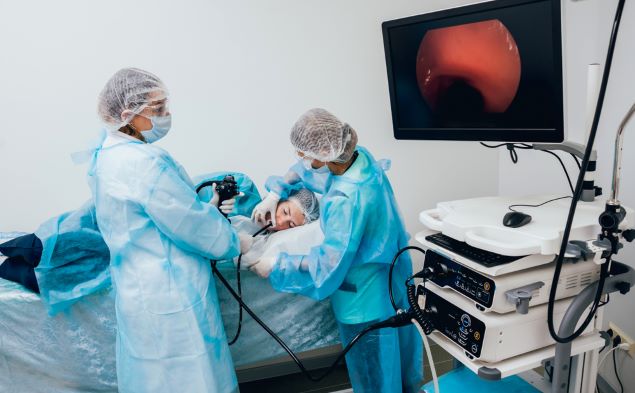Diagnosis of Gastritis & Gastropathy
How do doctors diagnose gastritis and gastropathy?
Your doctor will ask about your medical history, symptoms, and any medicines you take. Your doctor will also perform a physical exam and may order an upper gastrointestinal (GI) endoscopy with biopsies or other tests.
Upper GI endoscopy
Upper GI endoscopy is a procedure in which a doctor uses an endoscope—a flexible tube with a camera—to see the lining of your upper GI tract, including your esophagus, stomach, and duodenum. During upper GI endoscopy, a doctor obtains biopsies by passing an instrument through the endoscope to take small pieces of tissue from your stomach lining. A pathologist will examine the tissue with a microscope. Doctors may use upper GI endoscopy to diagnose gastritis or gastropathy, determine the cause, and manage complications.

Blood tests
Doctors may use blood tests to check for other causes of gastritis or signs of complications. For a blood test, a health care professional will take a blood sample from you and send the sample to a lab.
Stool tests
Doctors may use stool tests to check for H. pylori infection and for blood in your stool, a sign of bleeding in your stomach.
Urea breath test
Doctors may use a urea breath test to check for H. pylori infection. For the test, you will swallow a capsule, liquid, or pudding that contains urea that is “labeled” with a special carbon atom. If H. pylori is present, the bacteria will convert the urea into carbon dioxide. After a few minutes, you will breathe into a container, exhaling carbon dioxide. A health care professional will test your exhaled breath. If the test detects the labeled carbon atoms, the health care professional will confirm an H. pylori infection in your digestive tract.
Upper GI series
Doctors may use an upper GI series to check for signs of gastritis or gastropathy. An upper GI series is a procedure in which a doctor uses x-rays and a chalky liquid called barium to view your upper GI tract.
This content is provided as a service of the National Institute of Diabetes and Digestive and Kidney Diseases
(NIDDK), part of the National Institutes of Health. NIDDK translates and disseminates research findings to increase knowledge and understanding about health and disease among patients, health professionals, and the public. Content produced by NIDDK is carefully reviewed by NIDDK scientists and other experts.

